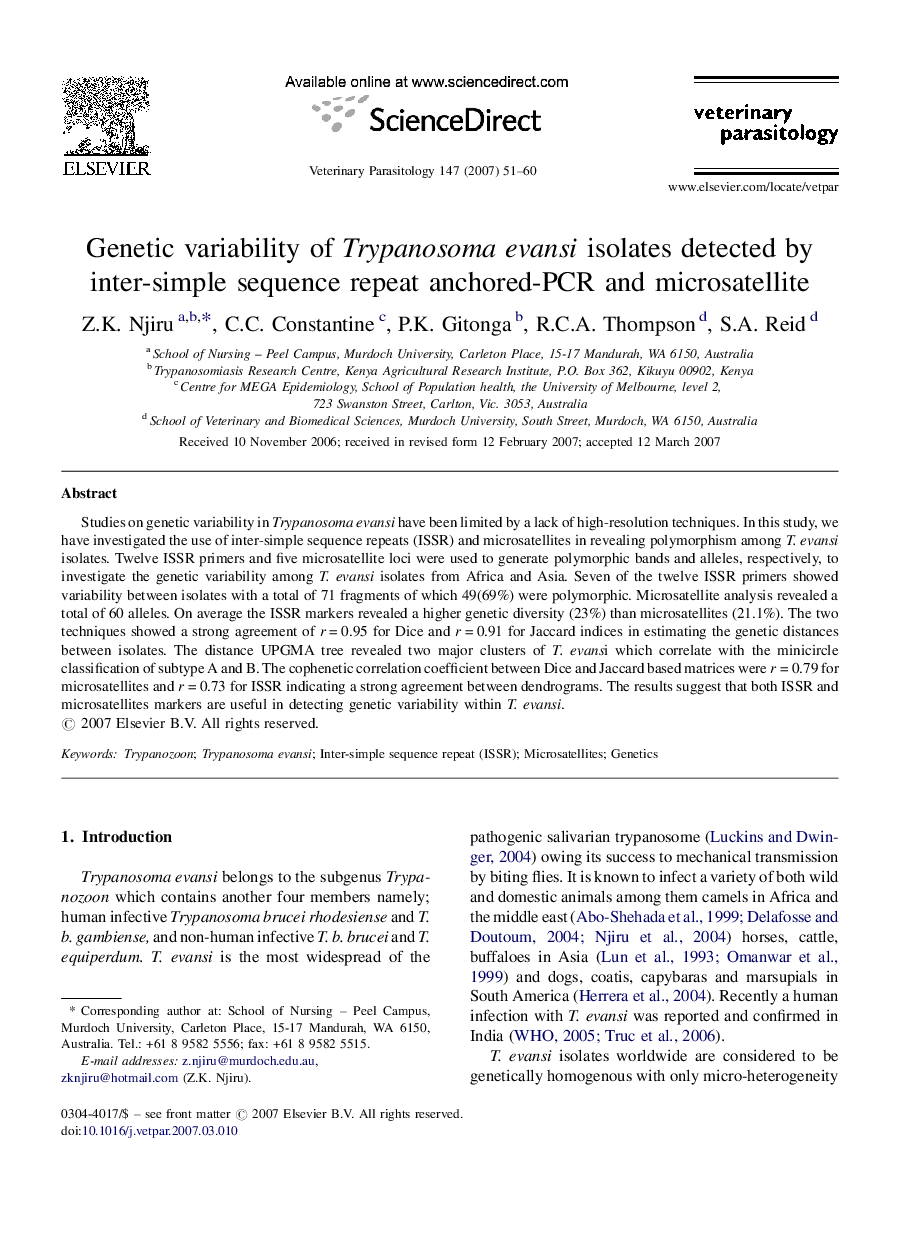| Article ID | Journal | Published Year | Pages | File Type |
|---|---|---|---|---|
| 2471924 | Veterinary Parasitology | 2007 | 10 Pages |
Studies on genetic variability in Trypanosoma evansi have been limited by a lack of high-resolution techniques. In this study, we have investigated the use of inter-simple sequence repeats (ISSR) and microsatellites in revealing polymorphism among T. evansi isolates. Twelve ISSR primers and five microsatellite loci were used to generate polymorphic bands and alleles, respectively, to investigate the genetic variability among T. evansi isolates from Africa and Asia. Seven of the twelve ISSR primers showed variability between isolates with a total of 71 fragments of which 49(69%) were polymorphic. Microsatellite analysis revealed a total of 60 alleles. On average the ISSR markers revealed a higher genetic diversity (23%) than microsatellites (21.1%). The two techniques showed a strong agreement of r = 0.95 for Dice and r = 0.91 for Jaccard indices in estimating the genetic distances between isolates. The distance UPGMA tree revealed two major clusters of T. evansi which correlate with the minicircle classification of subtype A and B. The cophenetic correlation coefficient between Dice and Jaccard based matrices were r = 0.79 for microsatellites and r = 0.73 for ISSR indicating a strong agreement between dendrograms. The results suggest that both ISSR and microsatellites markers are useful in detecting genetic variability within T. evansi.
